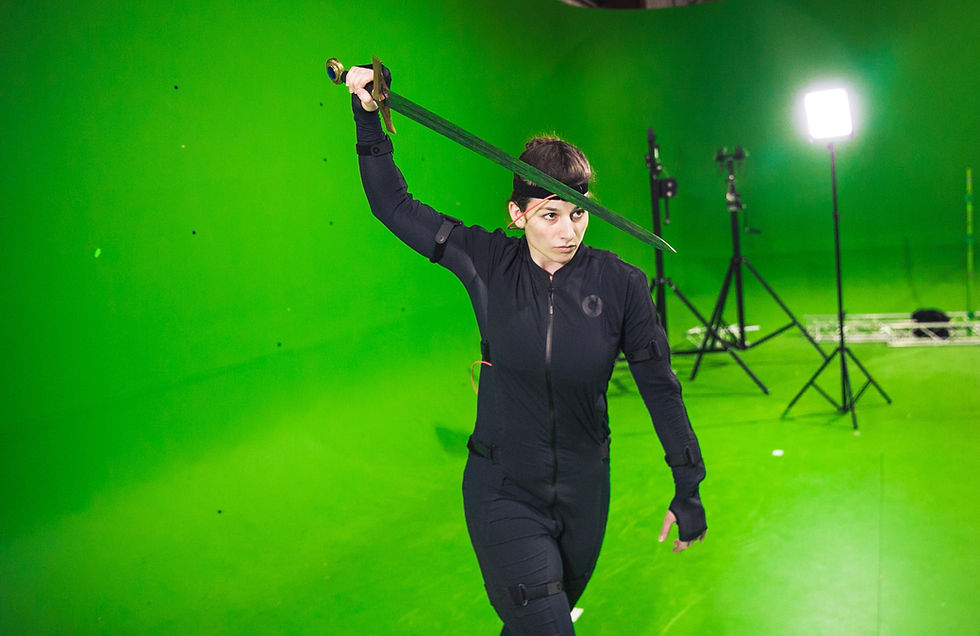How Technology is Changing and How we treat Visual Effects
- Kromines VFX

- Oct 13, 2023
- 3 min read
Prepare to set out on an incredible journey into the heart of cinematic magic, where technology has acted as the impetus for a redefinition of the Visual Effects (VFX) medium. We'll examine the extraordinary ways technology is altering how we create, experience, and handle visual effects in the film business in a world where innovation knows no bounds. Prepare for a mind-blowing and exciting journey that will astound and astound you.
Lesson 1: The Beginning of Digital Magic
Our journey starts at the beginning of the digital era when pioneers in visual effects (VFX) first saw the possibilities of computer-generated imagery (CGI) and digital magic.
1.1 The CGI Revolution
A turning point in VFX was the introduction of CGI in the 1970s. Movies like "Tron" and "Star Wars: Episode IV - A New Hope" exposed viewers to digital worlds and characters they had never before seen. Filmmakers were able to produce stunning visual effects because of technology.
1.2. CGI v/s real-world effects
Though the controversy over CGI versus physical effects was still very strong, technology was moving quickly. Movies like "Jurassic Park" and "Terminator 2: Judgment Day" demonstrated the efficacy of CGI in producing lifelike monsters and breathtaking action scenes. The distinctions between reality and fiction were blurred.
Lesson 2: Hyper-Reality and Digital Realism
VFX artists discovered themselves in an era of digital realism and hyper-reality as technology advanced.
2.1. The Merge of the Real and the Virtual
In 2016, movies like "Avatar" and "The Jungle Book" pushed the limits of CGI hyper-realism. The surroundings pulled viewers into alternate realities that felt indistinguishable from our own. In the world of digital storytelling, the impossibility was made feasible.
2.2 Modernization of CGI
CGI reached new heights as a result of technological developments like ray tracing and realistic rendering. With the aid of these technologies, VFX artists were able to produce images with previously unheard-of levels of detail, texture, and realism, engrossing audiences in ways that were previously unthinkable.
Lesson 3: Actual-Time Rendering and Virtual Production
We explore into the most recent technology advancements, including virtual production and real-time rendering.
3.1 The Development of Virtual Production
Virtual production methods, as used in "The Mandalorian" and "The Lion King" (2019), are revolutionizing the industry. Filmmakers may build complete landscapes on the set thanks to LED screens and real-time rendering. Practical sets and digital backgrounds can no longer be distinguished from one another.
3.2. Real-Time Rendering's Power
Using cutting-edge GPUs and software, real-time rendering enables on-set visualization of VFX shots. Real-time viewing of the finished shot by directors and VFX artists offers an unprecedented amount of control and creative freedom.
Lesson 4: VFX uses AI and machine learning
As we investigate the function of artificial intelligence (AI) and machine learning in VFX, our trip takes an exciting turn.
4.1 Deep Learning for Character Animation
Character animation is being revolutionized by deep learning algorithms. AI-driven systems can create realistic and expressive digital characters by learning from large datasets of motion capture data. The possibilities for storytelling are being redefined by this technology.
4.2 AI-Enhanced Rendering
In graphics, AI is also becoming more prominent. AI-driven denoising methods drastically shorten rendering times, enabling faster turnaround and higher VFX production efficiency.
Lesson 5: The Role of Immersive Experiences in the Future
We discover the astounding potential of technology to produce immersive cinematic experiences as we look to the future.
5.1 Augmented reality (AR) and virtual reality (VR)
VR and AR are evolving into crucial production tools for VFX. While AR uses digital overlays to improve real-world sets, VR is used by filmmakers to scout out virtual places. These innovations promise to transform the way we watch movies.
5.2 Holographic displays
We are getting closer to interactive, 3D movies thanks to developments in holographic displays. Imagine a day in the future when scenes and characters from movies and television shows appear in real-life environments, such as your living room.
Conclusion: The Ever-Evolving Odyssey
It is clear Technology is in a new era of visual effects as we get to the end of this mind-blowing journey. The bounds of what is possible in VFX continue to grow from the early days of CGI to present-day hyper-realism and from virtual production to AI-driven animation.
The future promises spectators immersive experiences that will take them to fantastical worlds. The use of technology as a driving force allows VFX artists to continuously push the boundaries of creativity, making the seemingly impossible both conceivable and astounding. The development of VFX technology is an ongoing voyage that keeps us on edge and impatient to see the next astounding advancement in cinematic innovation.







